Does anyone know of tools to automate image augmentation and manipulation. I wish to train ML image recognition models with images in which the target animal (and false targets) has been cropped out from originals and placed in other images with different backgrounds. If such tools could also simulate lighting conditions on the target ,based on the lighting in the new background, it would be super nice.
I am probably wishing for too much but if it is available, it would surely save me some time constructing these images manually.
27 January 2024 9:06am
Seems like I should be able to make something usable in python using rembg
Sometimes a little googling before posting a question here could make wonders ... ;)
27 January 2024 5:05pm
There might be some challenges & risks with that approach. ML models should ideally be trained using the same sort of data they will ultimately run against; presumably you're not intending your model to analyse 'photoshopped' images, but real unaltered images?
The problem is that the 'photoshopping' - whether it's masking & multi-image composition or any other effect - can introduce image artefacts that, even if imperceptible to humans, can be detectable by an ML model. The model can unwittingly become trained to detect and rely on those artefacts, hurting its performance in particularly inexplicable ways when it's then used on real, unadulterated data.
That's not to say it's impossible to train models this way - the use of synthesised data is not uncommon in the field - but it has downsides.
Tangentially, the same is true of things like watermarks and overlays inserted by trail cameras, like the time, weather, camera brand etc - those should all be removed before use with ML models. Otherwise, you might think you're training a model to accurately detect wolves vs coyotes but what you're actually training is a model which thinks canines captured on Brownings are wolves and on Reconyx's are coyotes, or somesuch coincidental correlation that happens to be in your training data.
12 February 2024 5:00pm
So we are using the default parameters in Yolov8 for data augmentation. It supports the basic flip, distort, rotate and adding noise.
It would be interesting to use yolov8 segmentation and extract the animal. Let me share the code snippet to extract the bears from images and background is black.
# %% [markdown]
# # Animal Face Feature Extraction
# %%
from pathlib import Path
import cv2 as cv
import numpy as np
from ultralytics import YOLO
# %%
# Variables
source = "https://upload.wikimedia.org/wikipedia/commons/e/e3/Grizzly_Bear_%28Ursus_arctos_ssp.%29.jpg"
model = "yolov8n-seg.pt" # see other yolov8 models
cococlass = 21 # Refer coco class names
# %%
# Load a yolov8 model
model = YOLO(model)
# %%
# Predict with the model
results = model(source=source, save=True)
# %%
# Source: Yolov8 Documentation
# https://docs.ultralytics.com/guides/isolating-segmentation-objects/
# Iterate detection results (helpful for multiple images)
for r in results:
img = np.copy(r.orig_img)
img_name = Path(r.path).stem # source image base-name
# Iterate each object contour (multiple detections)
for ci,c in enumerate(r):
# Get detection class name
label = c.names[c.boxes.cls.tolist().pop()]
b_mask = np.zeros(img.shape[:2], np.uint8)
# Create contour mask
contour = c.masks.xy.pop().astype(np.int32).reshape(-1, 1, 2)
_ = cv.drawContours(b_mask, [contour], -1, (255, 255, 255), cv.FILLED)
# Isolate object with black background
mask3ch = cv.cvtColor(b_mask, cv.COLOR_GRAY2BGR)
isolated = cv.bitwise_and(mask3ch, img)
# Bounding box coordinates
x1, y1, x2, y2 = c.boxes.xyxy.cpu().numpy().squeeze().astype(np.int32)
# Crop image to object region
iso_crop = isolated[y1:y2, x1:x2]
# Save isolated object to file
_ = cv.imwrite(f'{img_name}_{label}-{ci}.png', iso_crop)
# %%



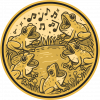
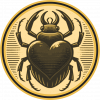
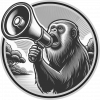
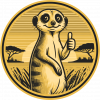
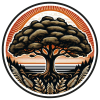





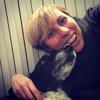



Lars Holst Hansen
Aarhus University